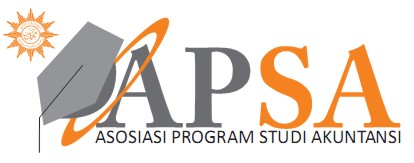Exploring the impact of restaurant taxpayer behavior on the success of tapping box technology in Yogyakarta
DOI:
https://doi.org/10.18196/jai.v26i2.25389Keywords:
Awareness, Compliance, Knowledge, Tapping Box, TaxpayerAbstract
Research aims: This study aims to analyze the influence of taxpayer compliance, awareness, and knowledge on the success of tapping box technology. Additionally, the study considers the role of gender as a moderating .
Design/Methodology/Approach: This research used a quantitative approach by employing a non-probability sampling method with a census technique involving all 194 restaurant taxpayers in Yogyakarta City equipped with tapping box technology. The data were analyzed using the SEM-PLS method and Multi-Group Analysis.
Research findings: The results of the study indicate that taxpayer compliance and knowledge have a significant impact on the success of tapping box technology. However, taxpayer awareness does not have a significant impact on the success of tapping box technology. In comparison, gender does not have a significant role in the success of tapping box technology.
Theoretical contribution/Originality: This research contributes to the development of taxation literature, particularly in regional taxes, by highlighting the role of taxpayer compliance and knowledge in the success of taxation technology. These findings offer a new perspective that can enrich the literature in the field of regional taxation.
Practitioner/Policy implication: These findings imply that the Yogyakarta City Government should prioritize improving taxpayer compliance and knowledge as the primary strategy to achieve greater success in tapping box technology
Research limitation/Implication: Although the sample represents over 69% of the population, the research has limitations, primarily due to 31% of the population declining to complete the questionnaire without offering a clear explanation.
References
Abdennebi, H. Ben. (2023). M-banking adoption from the developing countries perspective: A mediated model. Digital Business, 3(2), 100065. https://doi.org/10.1016/j.digbus.2023.100065
Afghani, M. F., & Yulianti, E. (2017). Pengaruh Kepercayaan, Keamanan, Persepsi Risiko, Serta Kesadaran Nasabah Terhadap Adopsi E-Banking Di Bank Bri Surabaya. Journal of Business & Banking, 6(1), 113–128. https://doi.org/10.14414/jbb.v6i1.898
Al-Okaily, M. (2024). Toward an integrated model for the antecedents and consequences of AIS usage at the organizational level. EuroMed Journal of Business, 19(3), 645–666. https://doi.org/10.1108/EMJB-05-2022-0100
Alm, J., & Torgler, B. (2011). Do Ethics Matter? Tax Compliance and Morality. Journal of Business Ethics, 101(4), 635–651. https://doi.org/10.1007/s10551-011-0761-9
Bagozzi, R. P., & Yi, Y. (1988). On the evaluation of structural equation models. Journal of the Academy of Marketing Science, 16(1), 74–94. https://doi.org/10.1007/BF02723327
Bainar. (1998). Wacana perempuan dalam keindonesiaan dan kemodernan. PT Pustaka Cidesindo. https://worldcat.org/title/39628083
Barra, C., Grimaldi, M., Muazzam, A., Troisi, O., & Visvizi, A. (2024). Digital divide, gender gap, and entrepreneurial orientation: How to foster technology adoption among Pakistani higher education students? Socio-Economic Planning Sciences, 93(August 2023), 101904. https://doi.org/10.1016/j.seps.2024.101904
Chin, W. W. (1998). The partial least squares approach to structural equation modelling. In Marcoulides G. A. (Ed.). Modern Methods for Business Research, 295(2), 295–336.
Cohen, J. (1988). Statistical Power Analysis for the Behavioral Sciences (2nd ed.). Lawrence Erlbaum Associates, Publishers.
Cohen, J. (1992). A power primer. Psychological Bulletin, 112(1), 155–159. https://doi.org/10.1037/0033-2909.112.1.155
DeLone, W. H., & McLean, E. R. (1992). Information systems success: The quest for the dependent variable. Information Systems Research, 3(1), 60–95. https://doi.org/10.1287/isre.3.1.60
DeLone, W. H., & McLean, E. R. (2003). The DeLone and McLean model of information systems success: A ten-year update. Journal of Management Information Systems, 19(4), 9–30. https://doi.org/10.1080/07421222.2003.11045748
Dirghayusa, I. P. A., & Yasa, I. N. P. (2020). Pengaruh Penggunaan Tapping Box Dan Kesadaran Wajib Pajak Terhadap Kepatuhan Dengan Pemahaman Penggunaan Sistem Online Sebagai Variabel Pemoderasi. JIMAT (Jurnal Ilmiah Mahasiswa Akuntansi) Undiksha, 11(3), 538–549. https://doi.org/10.23887/jimat.v11i3.27015
Endrasti, N. R., & Prastiwi, D. (2023). Pengaruh Kompleksitas Sistem Perpajakan terhadap Kepatuhan Wajib Pajak Orang Pribadi dengan Gender sebagai Variabel Moderasi. Jurnal Analisa Akuntansi Dan Perpajakan, 7(2), 200–219. https://doi.org/10.25139/jaap.v7i2.6579
Eriksen, K., & Fallan, L. (1996). Tax knowledge and attitudes towards taxation; A report on a quasi-experiment. Journal of Economic Psychology, 17(3), 387–402. https://doi.org/10.1016/0167-4870(96)00015-3
Fornell, C., & Larcker, D. F. (1981). Evaluating Structural Equation Models with Unobservable Variables and Measurement Error. Journal of Marketing Research, 18(1), 39–50. https://doi.org/10.2307/3151312
Frey, B. S., & Torgler, B. (2007). Tax morale and conditional cooperation. Journal of Comparative Economics, 35(1), 136–159. https://doi.org/10.1016/j.jce.2006.10.006
Hair, J. F., Hult, T. M. G., Ringle, C. M., Sarstedt, M., Danks, N. P., & Ray, S. (2021). Partial Least Squares Structural Equation Modeling (PLS-SEM) Using R. Springer Cham. https://doi.org/10.1007/978-3-030-80519-7
Hair, J. F., Risher, J. J., Sarstedt, M., & Ringle, C. M. (2019). When to use and how to report the results of PLS-SEM. European Business Review, 31(1), 2–24. https://doi.org/10.1108/EBR-11-2018-0203
Hapsari, I. (2023). Kepatuhan Wajib Pajak Restoran dengan Moderasi Kesadaran dan Sanksi Pajak. JRAK: Jurnal Riset Akuntansi Dan Keuangan, 11(2), 315–328. https://doi.org/10.17509/jrak.v11i2.50646
Hardiningsih, P., & Yulianawati, N. (2011). Faktor-faktor yang mempengaruhi kemauan membayar pajak. Dinamika Keuangan Dan Perbankan, 3(1), 126–142.
Harfiasarie, H., Musmuliadi, M., & Djiu, A. (2022). Review of Restaurant Tax Compliance Control Through Electronic Cash Register (ECR) Based on Fiscal Machinery. Journal Research of Social Science, Economics, and Management, 2(2), 282–288. https://doi.org/10.59141/jrssem.v2i02.305
Heider, F. (1958). The psychology of interpersonal relations. The psychology of interpersonal relations. John Wiley & Sons Inc. https://doi.org/10.1037/10628-000
Henseler, J., Ringle, C. M., & Sinkovics, R. R. (2009). The use of partial least squares path modeling in international marketing. In R. R. Sinkovics & P. N. Ghauri (Eds.), New Challenges to International Marketing, 20, 277–319. Emerald Group Publishing Limited. https://doi.org/10.1108/S1474-7979(2009)0000020014
Hidayati, M., Andayani, W., Kumala, R., Subagiyo, A., & Arimbhi, P. (2021). Modernization of Administration of Parking Tax Collection with Tapping Box as A Supervision and Compliance Function of Regional Taxpayers in Bekasi City. Ilomata International Journal of Tax and Accounting, 2(4), 295–303. https://doi.org/10.52728/ijtc.v2i4.367
Ho, A. D., & Yu, C. C. (2015). Descriptive statistics for modern test score distributions: Skewness, kurtosis, discreteness, and ceiling effects. Educational and psychological measurement, 75(3), 365-388. https://doi.org/10.1177/0013164414548576
Isik, O., Jones, M., & Sidorova, A. (2012). Business intelligence success: The roles of BI capabilities and decision environments. Information & Management, 50, 13–23. https://doi.org/10.1016/j.im.2012.12.001
Jöreskog, K. G., & Wold, H. (1982). The ML and PLS techniques for modeling with latent variables: Historical and comparative aspects. Systems under Indirect Observation, Part I, 263–270.
Karyanto, & Sofyani, H. (2025). Systematic literature review : Determinants and contribution of restaurant tax to local own-source revenue in Indonesia. Journal of Accounting and Investment, 26(1), 33–57. https://doi.org/10.18196/jai.v26i1.22754
Kelley, H. H. (1967). Attribution theory in social psychology. Nebraska Symposium on Motivation.
Kirchler, E., Hoelzl, E., & Wahl, I. (2008). Enforced versus voluntary tax compliance: The “slippery slope” framework. Journal of Economic Psychology, 29(2), 210–225. https://doi.org/10.1016/j.joep.2007.05.004
Mentari, A. D., & Ilfitriah, A. M. (2018). the Effect of Awareness, Speed of Transactions, Security, Perceived Usefulness With Mediation of Perceived Ease of Use on M-Banking Adoptions BRI Makassar Raya. Journal of Business & Banking, 8(1), 157–175. https://doi.org/10.14414/jbb.v8i1.1554
Mohammad, A. B., Al-Okaily, M., Al-Majali, M., & Masa’deh, R. (2022). Business Intelligence and Analytics (BIA) Usage in the Banking Industry Sector: An Application of the TOE Framework. Journal of Open Innovation: Technology, Market, and Complexity, 8(4), 189. https://doi.org/10.3390/joitmc8040189
Mohammed, A. B., Al-Okaily, M., Qaism, D., & Al-Majali, M. K. (2024). Towards an understanding of business intelligence and analytics usage: Evidence from the banking industry. International Journal of Information Management Data Insights, 4(1), 100215. https://doi.org/10.1016/j.jjimei.2024.100215
Oakley, A. (1972). Sex, gender and society. In Towards a new society. Maurice Temple Smith Ltd. https://worldcat.org/title/152366252
Prananda, I. S., Harimurti, F., & Sunarti, S. (2020). Analisis kontribusi dan efektivitas pajak hotel, pajak restoran, dan pajak parkir terhadap pendapatan asli daerah (Studi Kasus Kota Surakarta dan Kota Yogyakarta tahun 2012-2018). Jurnal Akuntansi Dan Sistem Teknologi Informasi, 16(2), 173–187. https://doi.org/10.33061/jasti.v16i2.4426
Rahayu, S. K. (2017). Perpajakan konsep dan aspek formal. Bandung: Rekayasa Sains.
Sarstedt, M., Ringle, C. M., & Hair, J. F. (2017). Partial Least Squares Structural Equation Modeling. In C. Homburg, M. Klarmann, & A. Vomberg (Eds.), Handbook of Market Research. Springer, Cham. https://doi.org/10.1007/978-3-319-05542-8_15-1
Saunders, M., Lewis, P., & Adrian, T. (2019). “Research Methods for Business Students”-Eighth Edition Chapter 4: Understanding research philosophy and approaches to theory development. In Pearson Education Limited (Issue March).
Sayaf, A. M. (2023). Adoption of E-learning systems : An integration of ISSM and constructivism theories in higher education. Heliyon, 9(2). https://doi.org/10.1016/j.heliyon.2023.e13014
Shmueli, G., Ray, S., Velasquez Estrada, J., & Chatla, S. (2016). The elephant in the room: Predictive performance of PLS models. Journal of Business Research, 69(10), 4552–4564. https://doi.org/10.1016/j.jbusres.2016.03.049
Sigit. (2023). Wawancara Staf Bidang Pelayanan Pendaftaran dan Penetapan Pendapatan Daerah BPKAD Kota Yogyakarta.
Sijabat, R. (2020). Analysis of e-government services: A study of the adoption of electronic tax filing in Indonesia. Jurnal Ilmu Sosial Dan Ilmu Politik, 23(3), 179–197. https://doi.org/10.22146/jsp.52770
Suprianto, B., Myrna, R., Sumaryana, A., & Sukarno, D. (2025). Towards Tax Efficiency and Compliance: Self-Assessment in Indonesia. International Journal of Public Administration, 0(0), 1–4. https://doi.org/10.1080/01900692.2024.2436565
Syahputra, B. E., & Urumsah, D. (2019). Deteksi Fraud Melalui Audit Pemerintahan yang Efektif: Analisis Multigrup Gender dan Pengalaman. Jurnal Akuntansi Dan Bisnis, 19(1), 31–42. https://doi.org/10.20961/jab.v19i1.319
Syakura, M. A., & Baridwan, Z. (2014). Determinan perencanaan pajak dan perilaku kepatuhan wajib pajak badan. Jurnal Akuntansi Multiparadigma, 5(2), 185–201. http://dx.doi.org/10.18202/jamal.2014.08.5017
Tene, J. H., Sondakh, J. J., & Warongan, J. D. L. (2017). Pengaruh pemahaman Wajib Pajak, kesadaran pajak, sanksi perpajakan dan pelayanan fiskus terhadap kepatuhan Wajib Pajak. Jurnal EMBA: Jurnal Riset Ekonomi, Manajemen, Bisnis Dan Akuntansi, 5(2), 363–486. https://doi.org/10.35794/emba.5.2.2017.15702
Urumsah, D., Ispridevi, R. F., Nurherwening, A., & Hardinto, W. (2022). Fintech adoption: Its determinants and organizational benefits in Indonesia. Jurnal Akuntansi & Auditing Indonesia, 26(1), 88–101. https://doi.org/10.20885/jaai.vol26.iss1.art9
Urumsah, D., & Lasmono, E. (2022). Investigation on the Contributing Factors of Compliance with Online Transaction Tax: An Empirical Study on MSME Actors. The Indonesian Journal of Accounting Research, 25(1), 83–106. https://doi.org/10.33312/ijar.572
Usman, H., & Akbar, P. S. (2020). Pengantar Statistika (Edisi Ketiga): Cara Mudah Memahami Statistika. Jakarta: Bumi Aksara.
Wong, K. K.-K. (2013). Partial Least Squares Structural Equation Modeling (PLS-SEM) Techniques Using SmartPLS. Marketing Bulletin, 24(1), 1–32. https://marketing-bulletin.massey.ac.nz/V24/MB_V24_T1_Wong.pdf
Zainuddin, A. A., & Mahdy, Z. A. (2017). The Islamic Perspectives of Gender-Related Issues in the Management of Patients With Disorders of Sex Development. Archives of Sexual Behavior, 46(2), 353–360. https://doi.org/10.1007/s10508-016-0754-y
Downloads
Published
How to Cite
Issue
Section
License
Copyright (c) 2025 Muhammad Alfurqan, Dekar Urumsah

This work is licensed under a Creative Commons Attribution-NonCommercial-NoDerivatives 4.0 International License.
License
 Journal of Accounting and Investment is licensed under Creative Commons Attribution Attribution-NonCommercial-NoDerivatives 4.0 International License.
Journal of Accounting and Investment is licensed under Creative Commons Attribution Attribution-NonCommercial-NoDerivatives 4.0 International License.




